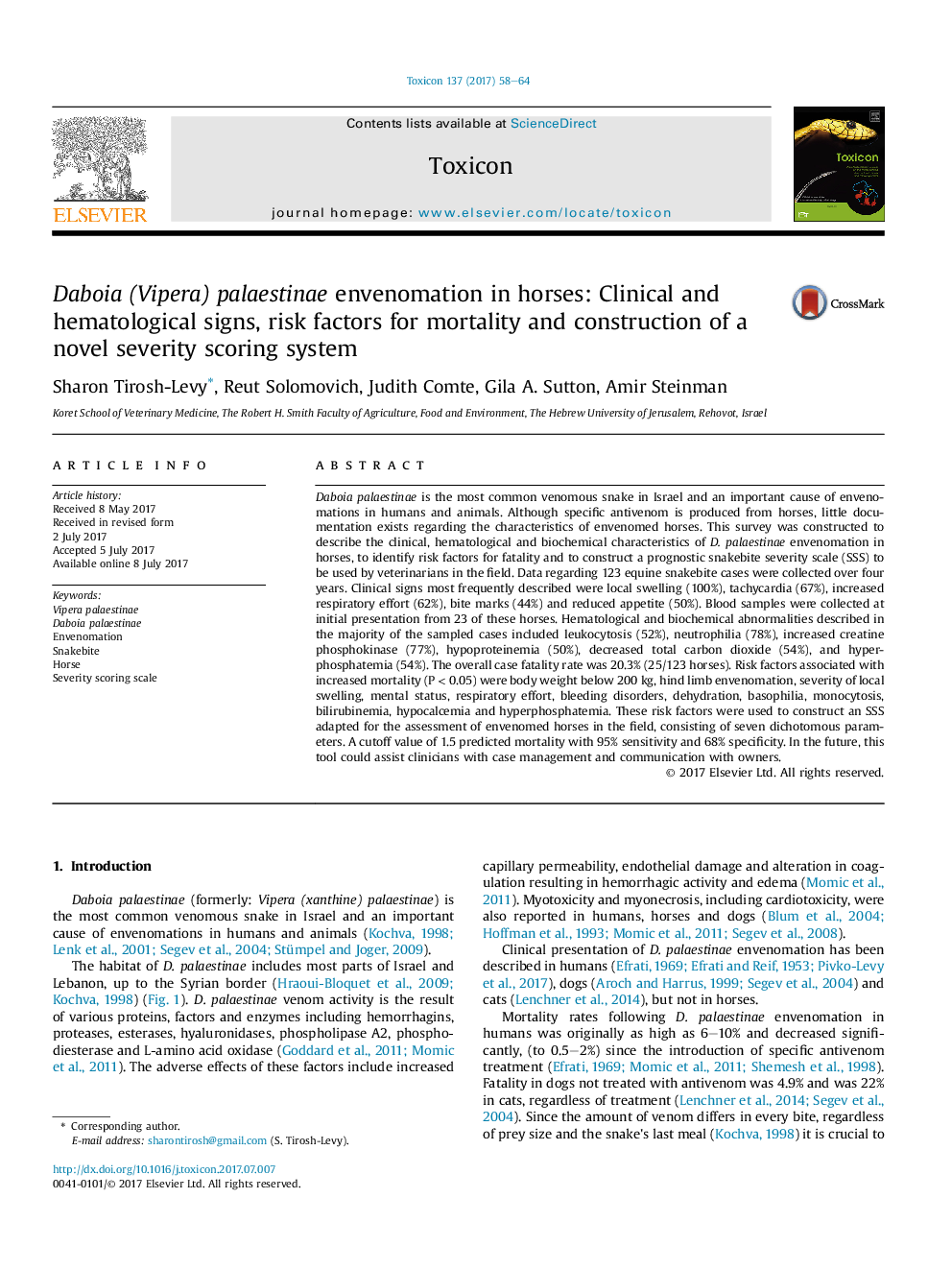| کد مقاله | کد نشریه | سال انتشار | مقاله انگلیسی | نسخه تمام متن |
|---|---|---|---|---|
| 5519280 | 1544099 | 2017 | 7 صفحه PDF | دانلود رایگان |

- We describe, for the first time, clinical and hematological characteristics of Daboia palaestinea envenomation in horses.
- The case fatality rate was high and several risk factors for mortality were identified.
- These risk factors were used to construct a prognostic snakebite severity scale (SSS).
- The SSS proved to be a sensitive and specific tool which improves clinicians ability to predict mortality.
Daboia palaestinae is the most common venomous snake in Israel and an important cause of envenomations in humans and animals. Although specific antivenom is produced from horses, little documentation exists regarding the characteristics of envenomed horses. This survey was constructed to describe the clinical, hematological and biochemical characteristics of D. palaestinae envenomation in horses, to identify risk factors for fatality and to construct a prognostic snakebite severity scale (SSS) to be used by veterinarians in the field. Data regarding 123 equine snakebite cases were collected over four years. Clinical signs most frequently described were local swelling (100%), tachycardia (67%), increased respiratory effort (62%), bite marks (44%) and reduced appetite (50%). Blood samples were collected at initial presentation from 23 of these horses. Hematological and biochemical abnormalities described in the majority of the sampled cases included leukocytosis (52%), neutrophilia (78%), increased creatine phosphokinase (77%), hypoproteinemia (50%), decreased total carbon dioxide (54%), and hyperphosphatemia (54%). The overall case fatality rate was 20.3% (25/123 horses). Risk factors associated with increased mortality (P < 0.05) were body weight below 200 kg, hind limb envenomation, severity of local swelling, mental status, respiratory effort, bleeding disorders, dehydration, basophilia, monocytosis, bilirubinemia, hypocalcemia and hyperphosphatemia. These risk factors were used to construct an SSS adapted for the assessment of envenomed horses in the field, consisting of seven dichotomous parameters. A cutoff value of 1.5 predicted mortality with 95% sensitivity and 68% specificity. In the future, this tool could assist clinicians with case management and communication with owners.
Journal: Toxicon - Volume 137, October 2017, Pages 58-64